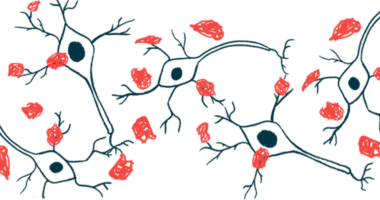Tiny brain device tracks Parkinson’s effect on executive function
Temporary implant collects data on complex brain region

Neurosurgeons temporarily implanted a tiny device into the brains of three people with Parkinson’s disease to collect data on a poorly known brain region, with the goal of understanding how Parkinson’s affects executive function.
Doctors at the University of Colorado Anschutz — the first site authorized by the U.S. Food and Drug Administration (FDA) to use the investigational device to study executive function — are collaborating with colleagues at Baylor University and Mass General Brigham to extend the research to 15 patients.
The Neuropixels device, a probe thinner than a human hair, will collect data from the dorsolateral prefrontal cortex, which is responsible for tasks such as planning, problem-solving, and multitasking — all impaired in Parkinson’s.
“The loss of executive function is one of the most devastating symptoms of neurological diseases such as Parkinson’s and Alzheimer’s disease,” Daniel Kramer, MD, the study’s principal researcher and an assistant professor at the CU Anschutz School of Medicine, said in a university press release. “We currently lack the biomarkers needed to target and improve these functions, which is why this research is so groundbreaking because we’re gaining new insights into one of the most complex parts of the brain.”
Device reads hundreds of neurons to provide data
“The goal is to eventually use this data to pave the way for new, more effective treatments for Parkinson’s disease,” Kramer said.
In addition to the well-known motor symptoms of Parkinson’s, patients may face a range of nonmotor challenges, including cognitive impairments. A significant aspect of these cognitive changes involves deficits in executive function, which encompass the skills necessary for managing daily activities.
People with Parkinson’s may struggle with maintaining attention, cognitive processing and word retrieval, learning new information, and recalling memories.
“Treating these impairments has been a major challenge because executive function operates within the brain in ways that are not yet fully understood,” Kramer said.
The Neuropixels device is equipped with 960 electrodes, allowing for the simultaneous recording of hundreds of nerve cells (neurons) at once. This provides researchers with a wealth of data about brain function that was previously unattainable.
While early attempts into executive function focused on one or two neurons at a time within the same brain region, with Neuropixels researchers can gather up to 10 times the information.
“This study is a major step forward for advancing research in Parkinson’s disease by capturing data and insights that were once beyond our reach.”
The device was implanted in the participants’ brains while they were awake during deep brain stimulation (DBS) surgery, a therapeutic approach where electrodes are implanted in specific brain regions to regulate neuronal activity and help ease Parkinson’s symptoms.
With the device implanted, the patients were asked to perform executive function tasks so that it could collect data on neuronal activity related to this cognitive function. The device was then removed and the DBS surgery completed.
Neuropixels’ enhanced ability to track neuronal activity will enable scientists to pinpoint specific patterns or irregularities in brain function related to Parkinson’s, paving the way for the identification of biomarkers that could improve treatment for its symptoms, the university said.
“This study is a major step forward for advancing research in Parkinson’s disease by capturing data and insights that were once beyond our reach,” Kramer said. “By using the latest advancements in neuroscience, we’re now able to access critical information from specific neural populations in areas of the brain that were previously difficult to study.”
This procedure received FDA approval under the Investigational Device Exemption program. The research is funded by the National Institutes of Health’s Brain Research Through Advancing Innovative Neurotechnologies Initiative and the National Institute on Deafness and Other Communication Disorders.







